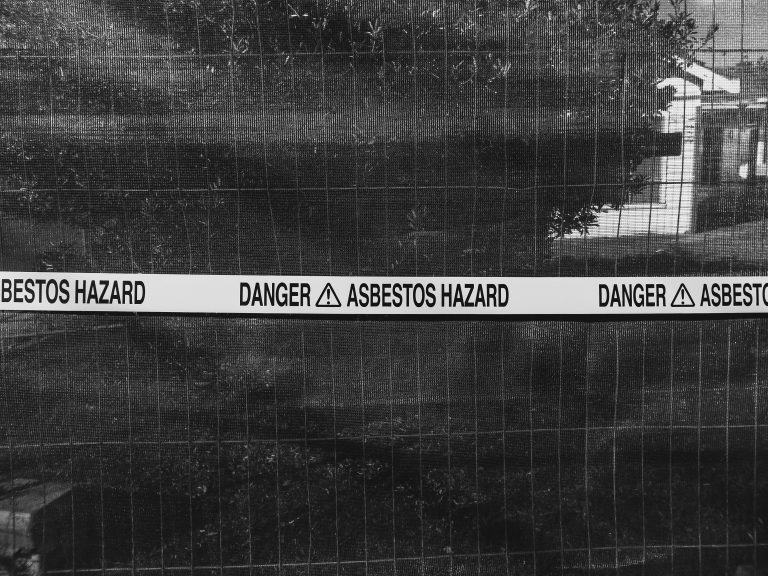When you discover that your home in East Anglia might contain asbestos, it’s only natural to feel a bit overwhelmed. The risks are well-publicised, and suddenly what should be a sanctuary can feel full of uncertainty. Many homeowners are tempted to take matters into their own hands, but when it comes to asbestos, this really isn’t the time for a DIY approach. Removing asbestos is a job for properly trained professionals for a host of safety, legal, and practical reasons.
Trying to get rid of asbestos yourself puts not just your own health at risk, but also the well-being of your family and anyone else who enters your home. Besides the obvious health dangers, mishandling asbestos can break the law and make a mess that’s costly and complicated to fix later on. If you’re wondering what actually happens during professional removal—and why it’s so important to call in the asbestos removal experts, read on. This guide explains how the pros in East Anglia tackle asbestos step by step, from the moment they walk through your door to the point when your home is fully safe again.
Why You Should Never Remove Asbestos Yourself
It’s worth underscoring just how dangerous asbestos can be if it’s disturbed. In older homes across East Anglia, asbestos was once seen as a miracle material, fireproof, strong and insulating. The trouble is, when these materials are cut, drilled into, sanded or damaged, they release tiny fibres, invisible to the naked eye, which can float about in the air for days. If breathed in, these fibres can lodge deep in your lungs, with life-changing or even fatal consequences many years down the line.
We’re talking about illnesses like:
- Mesothelioma – a type of cancer almost always linked to asbestos
- Asbestosis – a lung disease that makes it increasingly hard to breathe
- Lung cancer – brought on specifically by asbestos fibres
Professionals such as Asbestos Removal Cambridge have strict procedures, training, and equipment for a reason. Without it, you could inadvertently spread asbestos fibres through your home, making things far worse, both in terms of health and the difficulty of cleaning up. On top of that, you can’t legally throw asbestos-contaminated material in your normal bin—the law requires proper disposal through licensed facilities.
How the Professionals Do It: Step by Step
Tackling asbestos is nothing like a typical home improvement project. In the UK, only properly licensed contractors, regulated by the Health and Safety Executive (HSE), are allowed to handle this work. Here’s how local company Asbestos Removal Ipswich go about it.
Step 1: Assessment and Planning
It all starts with a specialist survey, usually carried out by a UKAS-accredited asbestos surveyor. If asbestos is found, and you’ve got your official report, you can hire a licensed removal contractor. Before anything happens, they draw up a detailed plan, known as a “Plan of Work” which lays everything out:
- Exactly where the asbestos is
- Which materials and techniques will be used to remove it
- Required safety gear and procedures
- Decontamination steps
- Arrangements for safe disposal
The plan must legally be submitted to the HSE before work can start, ensuring that all boxes are ticked and everyone’s safety comes first.
Step 2: Sealing Off the Area
One of the most important parts of the job is making sure no asbestos fibres can escape into the rest of your house. The professionals set up a sealed enclosure around the area, usually with robust, heavy-duty plastic sheeting. Every possible route out (doors, windows, vents) is carefully closed off.
When the work is especially risky, say, with pipe lagging or insulation boards, they use a Negative Pressure Unit (NPU). This is a powerful fan and filter system that continuously draws air into the work zone, making sure anything released inside stays put.
Step 3: Decontamination Units
You’ll often see a decontamination “pod” attached to the enclosure. This acts as a gateway for anyone working inside. Before entering, they put on protective gear; before leaving, they remove their gear in a special “dirty” section and take a shower, making sure no stray fibres escape on their overalls, shoes or skin.
- Clean End: Where staff don fresh PPE before entering the danger zone
- Shower: For washing off any lingering fibres after a shift
- Dirty End: Where used protective clothing is safely bagged up
This attention to detail is what keeps your home and the wider environment safe.
Step 4: Asbestos Removal Begins
Now, the main event. Every asbestos removal professional on the job wears disposable coveralls and a high-grade respiratory mask, known as Respiratory Protective Equipment (RPE). They work methodically, using hand tools rather than power tools (to minimise dust) and keep the asbestos materials damp using special sprays.
- Wetting down: So asbestos fibres are less likely to become airborne
- Careful removal: Lifting materials out in one piece when possible, instead of breaking them up
- Immediate bagging: All waste is immediately double-bagged in special, clearly labelled asbestos bags
Step 5: Deep Cleaning the Site
After all visible asbestos has been removed, the team gets to work cleaning every inch of the work area.
- HEPA Vacuuming: Using industrial H-class vacuums fitted with advanced filters to capture even the tiniest fibres
- Wet wiping: All surfaces, fixtures, and fittings are wiped down with damp cloths, which are themselves thrown away as asbestos waste
It might seem extreme, but this level of thoroughness is necessary to make sure the area really is safe.
Step 6: The All-Clear, Independent Air Testing
Before the work area is unsealed, an independent analyst comes in to carry out rigorous air testing. There’s a set “four-stage clearance” process:
- Checking the area itself is complete and clean
- Meticulously inspecting every surface for traces of asbestos
- Sampling the air to prove fibre levels are safe
- Giving the go-ahead for the enclosure to come down
Only after all of this do you receive a Certificate of Reoccupation, proof your home is safe again.
Step 7: Safe and Proper Disposal
The final stage is taking away the removed asbestos waste. All the double-bagged materials are taken in a sealable van to a licensed hazardous waste disposal facility. You’ll get a consignment note, essential paperwork that confirms your asbestos was dealt with properly and legally.
Why Calling in the Pros Is Always Worth It
Handing the job to a licensed company in East Anglia isn’t just about ticking boxes. Here are a few reasons why using asbestos professionals it’s the best move:
- Your family’s safety: Highly-trained teams follow tested, robust safety protocols
- Legal peace of mind: Every step, from removal to disposal, complies with UK law
- Faster results: Specialists can complete the whole task quickly and efficiently
- Essential documentation: The certificate you get at the end proves the danger’s gone, which is useful for house sales and peace of mind
After the Work Is Done
Once the crew’s packed up, your home can genuinely be your sanctuary again. Keep your certificate and paperwork together with your house deeds, future buyers, surveyors and builders will want that reassurance down the line.
In summary, while the idea of asbestos in your East Anglia home is daunting, getting rid of it safely is all about calling the right professionals. Their expertise, equipment and attention to detail will protect your family, meet all legal requirements, and get you back to enjoying your home as soon as possible.


